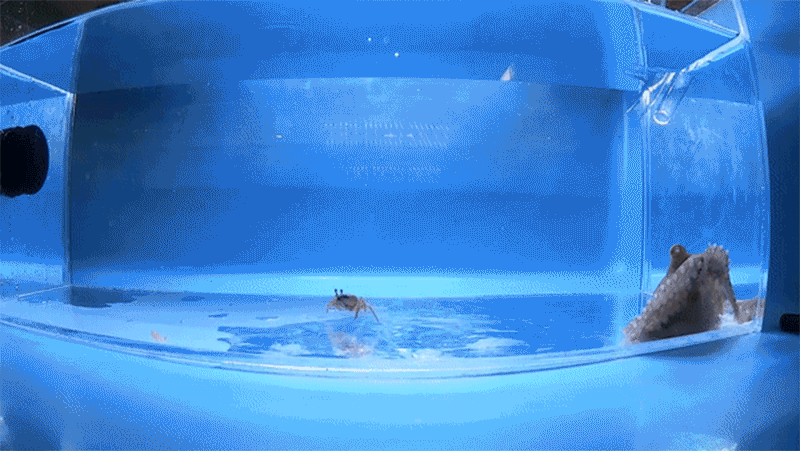Octopuses and squids both use the suckers on their limbs to grapple with their prey and to taste their quarry at the same time. Now, a pair of studies describes how these animals ‘taste by touching’ — and how evolution has equipped them with the perfect sensory ability for their lifestyles1,2. The papers were published in Nature on 12 April.
The research details the structure of the receptors that stud the animals’ suckers. These receptors transmit information that enables the creature to taste chemicals on a surface independently from those floating in the water.
Armed with brains
Cephalopods — the group that includes octopuses and squids — have long fascinated neuroscientists because their brains and sensory systems are unlike those found in any other animals. Octopuses, for instance, have more neurons in their arms than in their central brain: a structure that allows each arm to function independently as if it has its own brain3. And researchers have long known that the hundreds of suckers on each arm can both feel the environment and taste it4.
Molecular biologist Nicholas Bellono at Harvard University in Cambridge, Massachusetts, and his group were studying the California two-spot octopus (Octopus bimaculoides) when they came across a distinctive structure on the surface of the animal’s tentacle cells. Bellono suspected that this structure acted as a receptor for chemicals in the octopus’s environment. He contacted neurobiologist Ryan Hibbs at the University of California San Diego, who studies receptors that are architecturally similar to the octopus structures found by Bellono’s team: both types consist of five barrel-like proteins clustered to form a hollow tube.
When the researchers looked at the octopus genome, they found 26 genes for these barrel-shaped proteins, which could be shuffled to create millions of distinct five-part combinations that detect various tastes1. The researchers found that the octopus receptors tend to bind to ‘greasy’ molecules that don’t dissolve in water, suggesting that they are optimized for detecting chemicals on surfaces such as a fish’s skin, the sea floor or the octopus’s own eggs.
The authors think that having a wide variety of molecules in the suckers could allow an octopus to quickly determine what it is tasting, without having to send this information to the brain for processing.
A bitter pill
In the second study in Nature, Bellono, Hibbs and their colleagues studied how these chemical receptors arose in cephalopods2. The receptors seem to have evolved from those that many other organisms use to send signals through the nervous system.
The researchers compared the octopus receptors with those found in the tentacle suckers of striped dumpling squid (Sepioloidea lineolata) and found that the squid receptors responded to molecules that would produce a bitter taste. This suggests that a squid might choose to accept or reject its prey based on this particular taste.
Analysing the squid and octopus genomes showed that the receptors had evolved independently after squid and octopus ancestors diverged around 300 million years ago, acquiring new properties over time. The need for different types of receptors makes sense: squids float in the water, see their prey and shoot out tentacles to capture it, meaning that their suckers don’t taste a fish until they touch it. But for octopuses, which tend to sit on the sea floor and feel their way around for prey, having a variety of sensitive tentacle suckers is crucial.
“To have so much insight so quickly is really exciting,” says Cliff Ragsdale, an evolutionary biologist at the University of Chicago, Illinois. He says that the findings raise many questions, including how the suckers send sensory information to the octopus’s brain and how the brain interprets it.

Copyright © 2024 International Society of Bionic Engineering All Rights Reserved
吉ICP备11002416号-1









